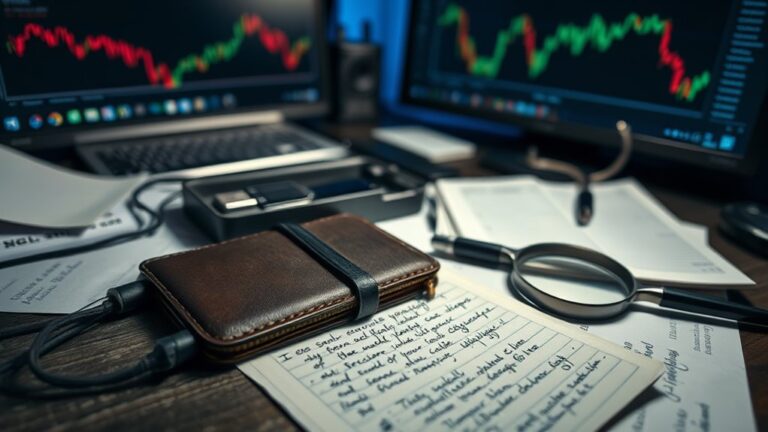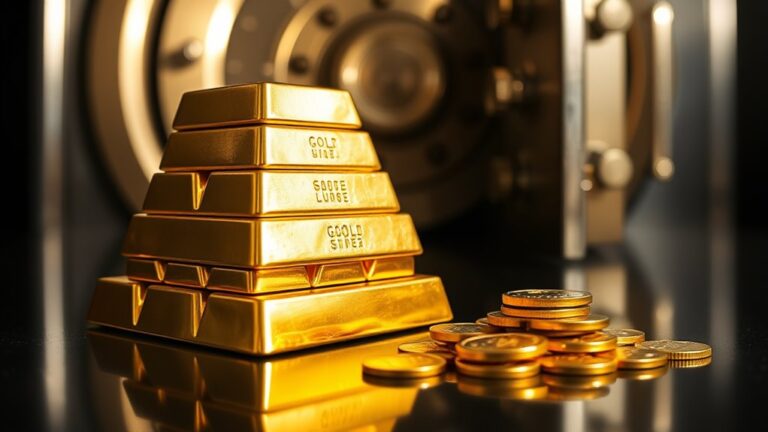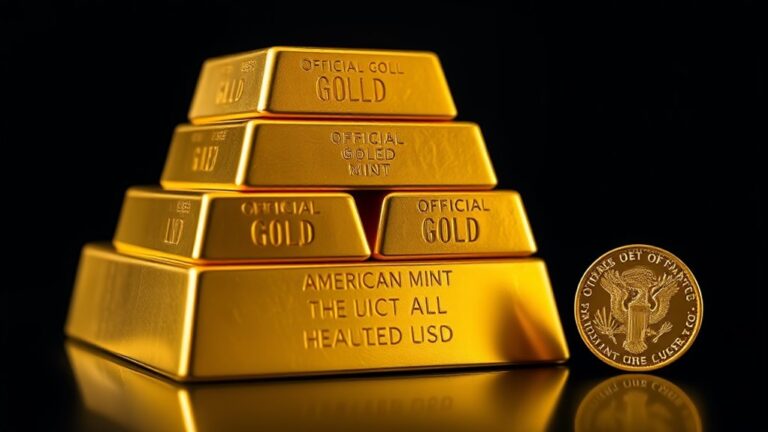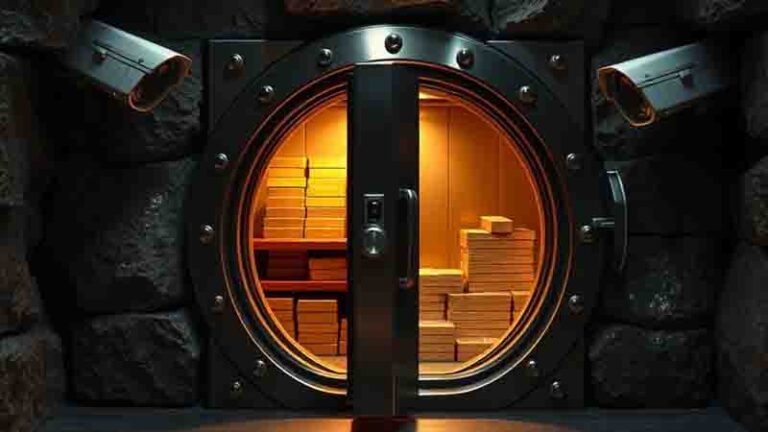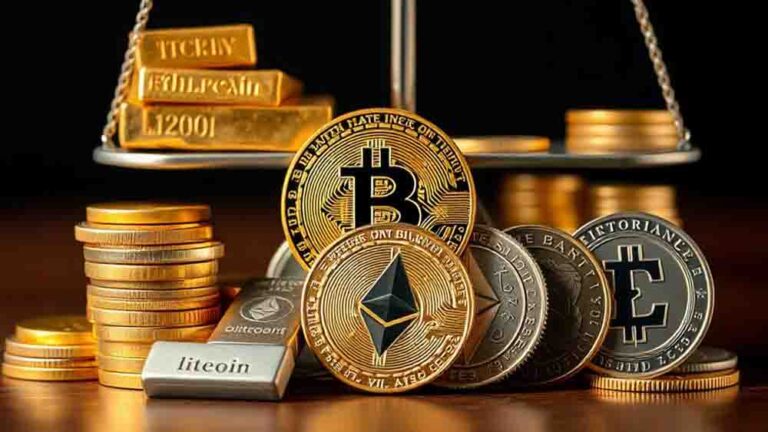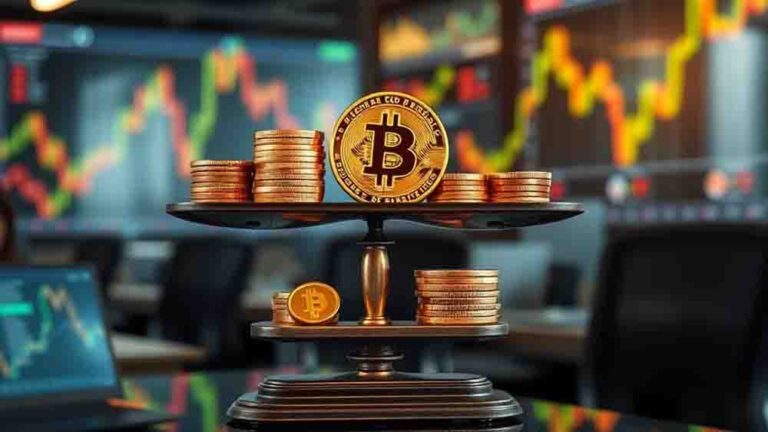Why Balance Precious Metals and Digital Assets Long-Term?
Note: This post may contain affiliate links, and we may earn a commission (with No additional cost for you) if you purchase via our link. See our disclosure for more info. The gold and crypto world is constantly changing. This is not financial, investment, legal, or professional advice. So, please verify the information on the gold and cryptocurrency provider’s websites.
You've likely heard about the potential of both precious metals and digital assets. But, have you considered combining them in your long-term investment strategy? This approach strikes a balance between stability and growth potential. It can protect your portfolio in different economic scenarios. By using the secure, time-tested gold and silver, you can invest in the promising new world of cryptocurrencies. This lets you navigate both old and new markets. But there's more to this strategy than meets the eye. The real power is in knowing how to combine these assets. They seem different, but they can boost your financial future.
Key Takeaways
- Complementary risk-reward profiles enhance portfolio stability during market fluctuations.
- Hedges against economic uncertainties by combining traditional and modern stores of value.
- Capitalizes on technological adoption and innovation in the digital asset space.
- Provides diverse liquidity options and accessibility for different market conditions.
- Enables strategic portfolio rebalancing to maintain optimal asset allocation over time.
Complementary Risk-Reward Profiles
When you're building a robust investment portfolio, you'll find that precious metals and digital assets offer complementary risk-reward profiles.
These two asset classes provide distinct advantages that, when combined, can enhance your portfolio diversification and risk management strategies.
Gold and other precious metals typically serve as a hedge against inflation and economic uncertainty. They've historically maintained their value during market downturns, offering stability to your portfolio.
In contrast, digital assets like Bitcoin have demonstrated high volatility but also significant growth potential. Over the past decade, Bitcoin has achieved an impressive 6,172.12% return, highlighting its capacity for substantial gains.
By balancing these complementary assets, you can:
- Leverage the defensive characteristics of precious metals
- Capitalize on the aggressive growth potential of digital assets
- Optimize your overall risk-reward profile
The distinct market dynamics of these asset classes allow you to navigate different economic conditions effectively.
While precious metals provide a safety net during turbulent times, digital assets offer the opportunity for substantial returns in bullish markets.
This combination enables you to create a well-rounded portfolio that balances stability and growth potential.
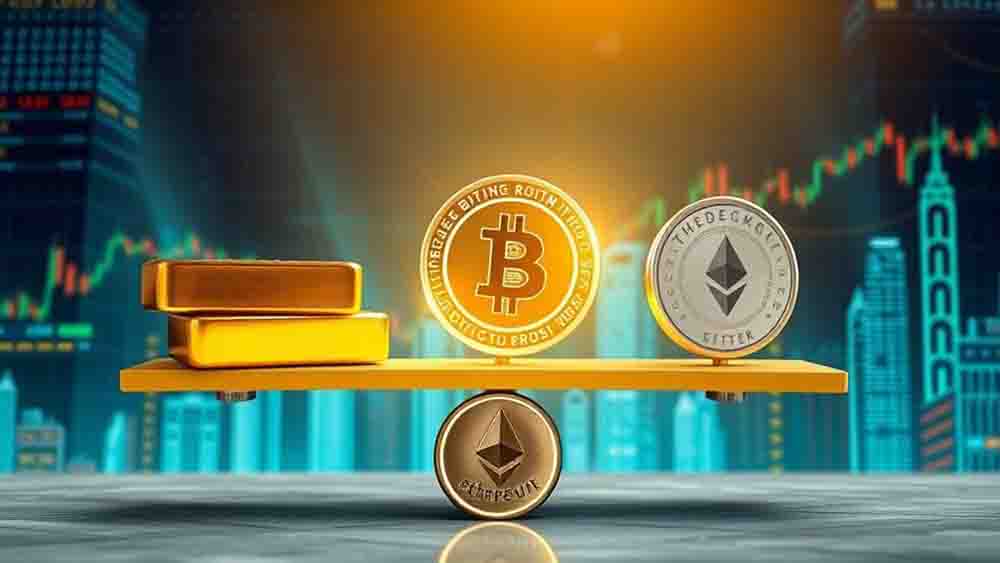
Hedging Against Economic Uncertainties
Building on the complementary nature of precious metals and digital assets, let's explore how this combination can protect your portfolio during economic turbulence.
Gold and silver have long been recognized as a store of value during economic downturns. These precious metals typically perform well when stock markets become highly volatile, offering stability to your investment portfolio.
On the other hand, digital assets like Bitcoin have emerged as an alternative investment option with significant growth potential, especially during market uncertainties.
By balancing precious metals and digital assets, you can create a robust hedge against economic uncertainties:
- Inflation protection: Gold and silver help preserve wealth during inflationary periods.
- Currency diversification: Digital assets offer an alternative to traditional fiat currencies.
- Growth potential: Bitcoin's market capitalization has shown exponential growth, from $0.04 billion in 2012 to $117.6 billion in 2018.
- Risk mitigation: The combination of precious metals' stability and digital assets' potential returns can help offset risks associated with traditional equities.
This balanced approach allows you to navigate volatile market conditions more effectively, providing a safeguard against economic downturns while maintaining exposure to potential high-growth opportunities in the digital asset space.
Technological Adoption and Innovation
Technological adoption and innovation have propelled digital assets into the mainstream financial landscape. You'll find that user-friendly platforms and improved accessibility have notably lowered barriers to entry, allowing more individuals and businesses to engage with cryptocurrencies and other digital assets.
This widespread adoption has led to Bitcoin becoming an increasingly accepted form of payment among merchants, while institutional investors recognize its potential as a valuable asset class.
The technological foundation supporting digital assets has strengthened considerably. Advancements in blockchain and cryptographic security have enhanced the infrastructure, making these assets more appealing as secure investment vehicles.
This improved technology has paved the way for innovations like decentralized finance (DeFi) and non-fungible tokens (NFTs), which have expanded the utility and market dynamics of digital assets.
As the digital asset ecosystem evolves, you'll notice an increase in regulatory frameworks and new financial instruments. The development of products like spot Bitcoin ETFs signals growing institutional interest and further legitimizes digital assets within traditional financial markets.
These advancements in technological adoption and innovation are reshaping the investment landscape, offering you diverse opportunities to participate in this rapidly growing sector.
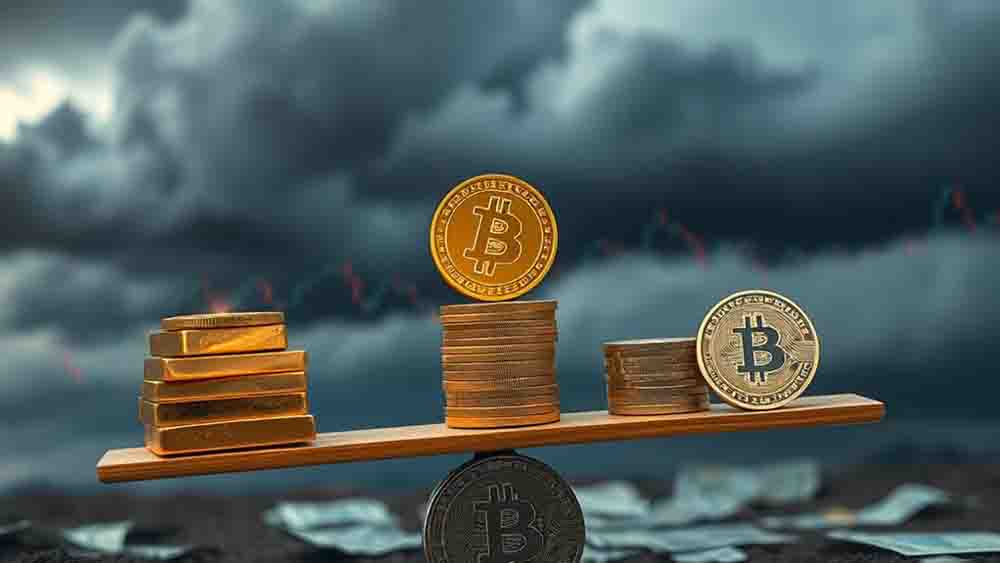
Liquidity and Accessibility Considerations
Liquidity lifelines play an essential role in balancing precious metals and digital assets within your investment portfolio. Both asset classes offer unique advantages regarding accessibility and market liquidity, providing you with flexibility during various economic conditions.
Precious Metals:
- Intrinsic value and stability
- Easy conversion to cash
- Hedge against economic uncertainty
Digital Assets:
- 24/7 trading availability
- Instant buying and selling
- Fractional ownership opportunities
When you incorporate both precious metals and digital assets, you're diversifying your liquidity options. Precious metals, such as gold and silver, serve as a reliable store of value, especially during turbulent times. Their tangible nature and widespread recognition guarantee that you can easily convert them to cash when needed.
On the other hand, digital assets like Bitcoin offer enhanced liquidity through round-the-clock trading on multiple exchanges. This accessibility allows you to capitalize on market opportunities at any time, potentially benefiting from rapid price movements.
Additionally, the option for fractional ownership in digital assets lowers entry barriers, enabling you to participate in the market with smaller investments.
Portfolio Rebalancing Strategies
While managing liquidity is vital, it's equally important to maintain an ideal balance between precious metals and digital assets in your portfolio. Portfolio rebalancing strategies help you adjust your investments regularly to maintain your desired risk-reward profile. This process involves monitoring asset performance and reallocating funds based on market volatility and long-term trends.
To effectively rebalance your portfolio:
- Assess your current asset allocation
- Compare it to your target allocation
- Identify underperforming assets using key performance indicators
- Adjust holdings to realign with your goals
Diversification across precious metals like gold and digital assets can enhance your portfolio's resilience against market fluctuations. Gold often serves as a hedge during economic uncertainty, while digital assets offer growth potential. However, it's important to evaluate the historical price correlations between these asset classes, as Bitcoin has shown significant price movements that can impact your overall portfolio value.
Implementing a systematic rebalancing schedule, such as quarterly or annually, helps maintain your target asset allocation. This approach reduces the risk of overexposure to volatile assets like cryptocurrencies while ensuring you capitalize on potential gains in both precious metals and digital assets over the long-term.
Frequently Asked Questions
Are Precious Metals a Good Long Term Investment?
Precious metals can be a good long-term investment for several reasons.
They've historically served as a hedge against inflation and economic uncertainty, maintaining purchasing power over time. Gold, for example, has an average annual return of 6-8%, making it competitive with traditional assets.
The limited supply of precious metals contributes to their enduring value. During economic downturns, they often outperform equities, providing portfolio diversification and reducing overall investment risk.
However, it's important to take into account your personal financial goals and risk tolerance when investing.
Why Are Precious Metals Not a Good Investment?
Precious metals may not be a good investment for several reasons.
You'll find their growth potential is limited compared to other assets, with gold's average annual return over the past decade being only 3.6%. They don't generate income or dividends, relying solely on price appreciation.
The market can be volatile due to mining costs and geopolitical factors. Additionally, precious metals may not provide adequate diversification during economic growth periods, as they often underperform equities.
Their increasing supply through mining can also dilute their scarcity and value over time.
What Are the Benefits of Investing in Digital Assets?
Investing in digital assets offers several benefits:
- High liquidity: You can easily buy, sell, or trade at any time, giving you quick access to your funds.
- Growth potential: Some digital assets have shown remarkable returns, like Bitcoin's 6,172.12% 10-year growth.
- Accessibility: Fractional ownership allows you to invest in high-value assets with smaller amounts.
- Diversification: Digital assets can help mitigate risks in your portfolio during market volatility.
- Increasing legitimacy: With $50 billion held by ETFs and companies, institutional interest is growing.
What Are the Benefits of Holding Precious Metals?
Holding precious metals offers several key benefits:
- Inflation hedge: They maintain value over time, protecting your wealth against currency devaluation.
- Portfolio diversification: Gold's low correlation with stocks provides balance during market volatility.
- Safe haven: During economic downturns, precious metals often see increased demand, offering stability.
- Scarcity value: Limited supply, especially for gold, contributes to long-term value retention.
- Historical performance: Precious metals have consistently proven their worth, often outperforming other assets during crises.
You'll gain these advantages by including precious metals in your investment strategy.
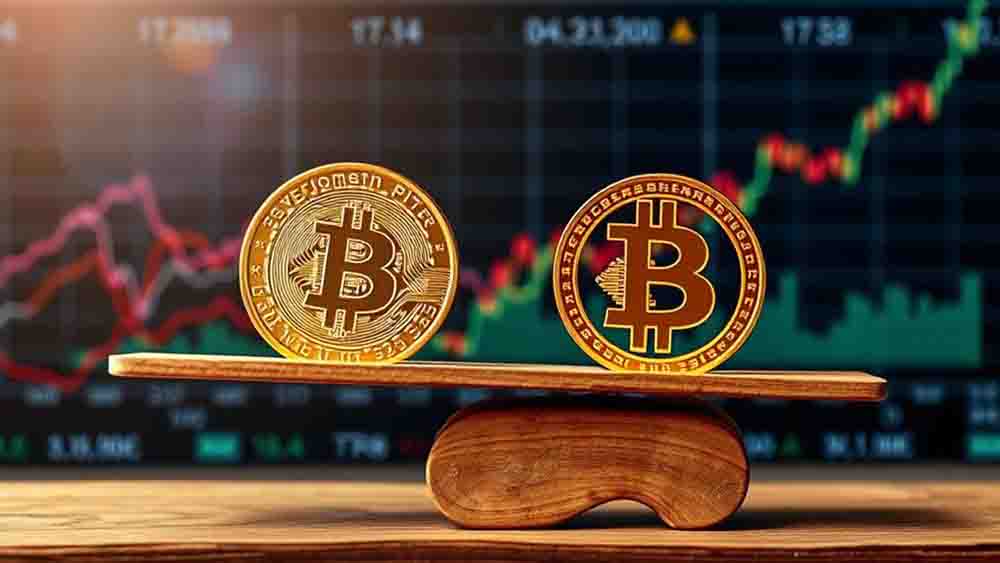
Conclusion
You'll find that balancing precious metals and digital assets in your long-term investment strategy offers unique advantages. By combining these asset classes, you're diversifying your portfolio, hedging against economic uncertainties, and capitalizing on technological advancements. This approach allows you to benefit from the stability of precious metals and the growth potential of digital assets. Remember to regularly rebalance your portfolio, considering liquidity needs and market conditions. Ultimately, this balanced strategy can help you achieve your long-term financial goals while managing risk effectively.









